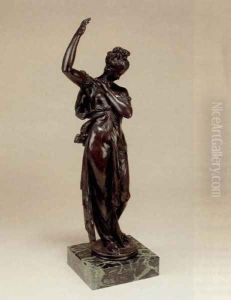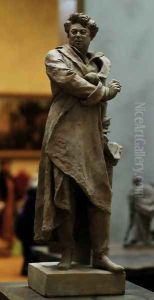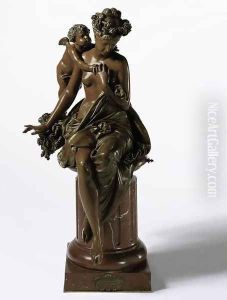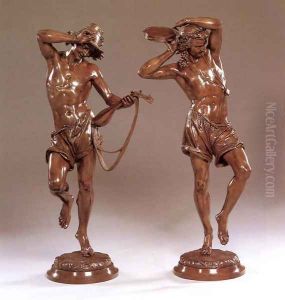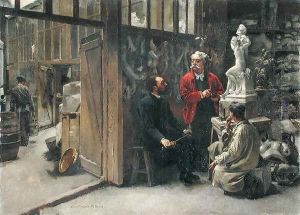Albert-Ernest Carrier-Belleuse Paintings
Albert-Ernest Carrier-Belleuse was a prominent French sculptor known for his decorative and figurative works during the Second Empire in France. He was born on June 12, 1824, in Anizy-le-Château, Aisne, France. Carrier-Belleuse started his artistic training at the École des Beaux-Arts in Paris under the tutelage of David d'Angers and later worked in the studio of Pierre-Jean David.
His career began to flourish during the 1850s, and he became one of the most sought-after sculptors of decorative arts, creating works that ranged from monumental statues to small-scale objects such as vases and clock cases. His style was characterized by a blend of neoclassicism and a more sensual, naturalistic approach that became popular during the Second Empire.
Carrier-Belleuse was a prolific artist, and his works were exhibited at the Salon, where he gained considerable acclaim. One of his most notable works is the bronze statue of 'Hebe asleep', which was exhibited at the Salon in 1861 and received widespread praise. He also worked on architectural projects, contributing to the embellishment of famous buildings such as the Louvre, the Opera Garnier, and the Hotel de Ville in Paris.
In addition to his own practice, Carrier-Belleuse played a significant role in the development of other artists. Perhaps most famously, he was a mentor to the young Auguste Rodin, who worked in his workshop during the 1860s. This association with one of the greatest sculptors of the following generation further emphasizes Carrier-Belleuse's influence on the art world.
Albert-Ernest Carrier-Belleuse's career continued to thrive until his later years. He was appointed the director of works at the Sèvres porcelain factory in 1875, where he introduced innovative techniques and designs. His legacy includes not only his vast body of sculptural work but also his impact on the decorative arts through his leadership at Sèvres.
Carrier-Belleuse passed away on June 4, 1887, in Sèvres, leaving behind a rich oeuvre that reflects the opulence and eclecticism of the French Second Empire. His works can be found in numerous museums and public spaces, attesting to his enduring influence and the appreciation of his artistic contributions.
